Lucy Hyner A2 Media Studies Advanced Portfolio
Wednesday, 4 January 2012
Friday, 16 December 2011
Evaluation Question 4 - How did you use media technologies in the construction and research, planing and evaluation stages?
For our music video we have used a large variety of media technologies to help us to create a professional media product, the Music Video and the Digipak/Advert. In all different area's and creation of the project, focusing mainly on pre-production, production and post-production, a wide range of media technologies were able to help us maintain a high standard of work, creating what looks like a some what professional video. There has been many advantages and disadvantages with the media technologies we focused on. We focused on using a combination of software throughout so we could then focus thoroughly on building up information (Writing post blog updates, and production updates) this helped us to be fully prepared for our end evaluation. We found that media technologies played an extreme role in our creation period, enabling us to try out new software we never even knew about, experimenting with new ideas and learing a lot throughout the process.
Our main technology focus was Blogger. This is an online multimedia interface which worked as a great way to record our work that had been completed, and keep up to date with our idea's, planning and production work. We were given a series of pre-production work to create at the start, which really helped to process our idea's and creation through a variety of media technoglogies again. E.g. Powerpoint and Prezzi's.  Blogger also worked well as all of our group members were able to share our idea's when not in lesson, and record our previous work updates. Where the World Wide Web is the largest piece of media technology today, it has influenced our idea's greatly as we were able to look at past music video's that have been created, and anaylze and inbed them into our blog's for research and comparison. We were also able to get idea's that related to our current theme of R&B/Pop. Blogger has really enabled us to stay organised and keep on track of all of our work.
Blogger also worked well as all of our group members were able to share our idea's when not in lesson, and record our previous work updates. Where the World Wide Web is the largest piece of media technology today, it has influenced our idea's greatly as we were able to look at past music video's that have been created, and anaylze and inbed them into our blog's for research and comparison. We were also able to get idea's that related to our current theme of R&B/Pop. Blogger has really enabled us to stay organised and keep on track of all of our work.

 Blogger also worked well as all of our group members were able to share our idea's when not in lesson, and record our previous work updates. Where the World Wide Web is the largest piece of media technology today, it has influenced our idea's greatly as we were able to look at past music video's that have been created, and anaylze and inbed them into our blog's for research and comparison. We were also able to get idea's that related to our current theme of R&B/Pop. Blogger has really enabled us to stay organised and keep on track of all of our work.
Blogger also worked well as all of our group members were able to share our idea's when not in lesson, and record our previous work updates. Where the World Wide Web is the largest piece of media technology today, it has influenced our idea's greatly as we were able to look at past music video's that have been created, and anaylze and inbed them into our blog's for research and comparison. We were also able to get idea's that related to our current theme of R&B/Pop. Blogger has really enabled us to stay organised and keep on track of all of our work.
Apart from the pre-production tasks and the recording and planning of the video, we used a significant amount of software to produe the filming of the video. We used very high tech Digital Sony HD Camcorders. These were really good as they produced a really good picture, which looked clear and professional. The hard drive was very strong and sustainable lasting a long time, which was really trustworthy as we knew we could rely on it. The battery pack's was easy accesable and easy to remove and charge. The camera's worked really well with the MAC's which was very helpful as we worked on them in the lesson, and the work was able to be transfered straight from the camera onto the Digital Editing System called Final Cut Express.
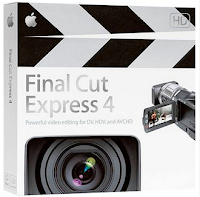

This was also another big part of our production, infact the most important part. We were able to use this to again create a professional video, with lots of cuts, pacing together the video creatively, being able to cut and add different shots. It was really easy just to Log and Transfer the shots straight from the camera. Adding in voice clips and footage into the timeline, which was also helpful as we were able to see how much more footage we had to film once we added new footage in. It was also really handy considering we were doing a music video, it enabled us to sync the lead singer (Roger)'s voice with our footage and make it exact timing. We had to be careful with Final Cut Express as on ocassion's it jumps, which isn't good for the timing and syncing of our sequel.
Another technology that enabled us to connect when were not in school was Facebook. We were able to upload our video on here and get some more audience feedback from all different age groups, not just the focused target audience. We uploadedcriticism we received. It was also a helpful piece of technology as we were able to talk to each other about scheduling and rescheduling filming dates and work with each other sending blog work when we were not at school.

The Internet was the main technology in our research. Google and Wikipedia enabled us to research practically everything we needed, from song lyrics to images that would help us and give inspiration to our video. We looked at companies and buisness of music videos's and what they look for in music video's, which we found was a story line that really engages the audience. YouTube helped us find video's that were relevent to our chosen genre and theme. We watched and analysed music videos that were an essential in our research and the pre-production of our video. This was really helpful as we could overlook over video's people have made, editing them and analyzing them in a way we would when our video is being marked, so we managed to understand what would be looked for. We also got a strong uderstanding of the conventions of music videos are and what makes them successful in the music industry. This really prepared us for our project, knowing fully what we had to do and what we was doing.
Another technology that enabled us to connect when were not in school was Facebook. We were able to upload our video on here and get some more audience feedback from all different age groups, not just the focused target audience. We uploadedcriticism we received. It was also a helpful piece of technology as we were able to talk to each other about scheduling and rescheduling filming dates and work with each other sending blog work when we were not at school.

The Internet was the main technology in our research. Google and Wikipedia enabled us to research practically everything we needed, from song lyrics to images that would help us and give inspiration to our video. We looked at companies and buisness of music videos's and what they look for in music video's, which we found was a story line that really engages the audience. YouTube helped us find video's that were relevent to our chosen genre and theme. We watched and analysed music videos that were an essential in our research and the pre-production of our video. This was really helpful as we could overlook over video's people have made, editing them and analyzing them in a way we would when our video is being marked, so we managed to understand what would be looked for. We also got a strong uderstanding of the conventions of music videos are and what makes them successful in the music industry. This really prepared us for our project, knowing fully what we had to do and what we was doing.
Evaluation Question 3 - What have you learned from your audience feedback?
We started of with asking the group about their interests and what subjects they studied, just to show extra backing information which could portray the age group and target audience. The positive feedback we received from the focus group included a lot of comments about how it worked really well as a professional and realistic video. We also found through our feedback that the changing of colours and our use of filters worked well and made our music video look professional as well as keeping the attentions throughout the shots and the narrative of Roger narrating and singing, and the storyline was kept and not lost, which we were worried about because our video contained lots of short clips and it's montage set up. Someone also quoted "A dream world" was an interesting interpretation that we had from our focus group, one member of the group saw the coloured sequences to be an almost 'dream like state' - relating to this intoxicated world Alice loves in.
We as a group found that the reason for this was the locations we had chosen, looking at our chosen target audience starting and focusing at the teenage age group, so the urban edge, ‘bad Alice’ we created portrayed this really well, showing a large connection with the audience. We simply added a leather jacket, dark eye shadow and piercing’s, which again helped to create this ‘bad Alice’. We wanted to create a party scene to also reflect over this teenage audience connection, but we found that when we had filmed this, the framings looked really unprofessional, even though the idea was to film it very scruffy and as if it was overlooking the wild party style Alice. We got rid of the idea due to the bad framing and also got feedback on the shots from the party scene, and the audience thoroughly agreed it was a much better idea as it then of the shot that looked professional. Our music video received a great deal of positive feedback, through out focus group and research work, which we were extremely happy with.
Our focus group managed to show us that our age group thought that the music video was focused towards them as our target audience, which was our main aim, that’s why we chose a group of teenagers to watch it first. We also found that no other aspects that would make our music video suitable for both a younger and an older group of audiences, and we had chosen the suitable age. I think we connected very well with the audience through our chosen shots and editing. We choose to portray as an intoxicated teenager, showing the connection with the teenage drug and alcohol use. We wanted to show drug use but not using what looked liked drugs, but we didn’t want to increase drug use and look like we were supporting it, so we thought of relevant ideas that connected to the wonderland theme and choose to use glitter instead.
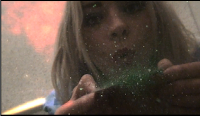
You see Alice using playing cards, again connecting to the idea of ‘Alice in Wonderland’ showing the Alice then picking up the card, as you think Alice was going to sniff the glitter you see her blow it, again contrasting the audiences views and showing mystery as it wasn’t expected. We were pleased to see that our focus group understood the extended metaphor of our music video and how we included the theme of drugs but not to the extent where drugs are actually on display, they are only signified in our music video. The feedback from the focus group about improving our video was about more of a story line to the video and to have maybe a different scene or location added to the video. This would had given us a more variety of clips to edit and make the video look more visually interesting and appealing to the viewer, which was also mentioned in other feedback.
It is nice to see that our focus group was fully captivated by our music video, and that the audience understood conventions and aspects that we included. We were also really glad that the audience felt very 'free.' Watching the video and felt able to draw their own thoughts and escape into the world that Alice was in and most importantly enjoy the music video throughout.
These comments made us feel very positive about our video, we were able to give us tips and guidelines for if in future we happened to create another music video, where we would involve more locations and a more scenes that expand the story to a wider extent.

You see Alice using playing cards, again connecting to the idea of ‘Alice in Wonderland’ showing the Alice then picking up the card, as you think Alice was going to sniff the glitter you see her blow it, again contrasting the audiences views and showing mystery as it wasn’t expected. We were pleased to see that our focus group understood the extended metaphor of our music video and how we included the theme of drugs but not to the extent where drugs are actually on display, they are only signified in our music video. The feedback from the focus group about improving our video was about more of a story line to the video and to have maybe a different scene or location added to the video. This would had given us a more variety of clips to edit and make the video look more visually interesting and appealing to the viewer, which was also mentioned in other feedback.
It is nice to see that our focus group was fully captivated by our music video, and that the audience understood conventions and aspects that we included. We were also really glad that the audience felt very 'free.' Watching the video and felt able to draw their own thoughts and escape into the world that Alice was in and most importantly enjoy the music video throughout.
These comments made us feel very positive about our video, we were able to give us tips and guidelines for if in future we happened to create another music video, where we would involve more locations and a more scenes that expand the story to a wider extent.
Thursday, 15 December 2011
Evaluation Question 2 - How effective is the combination of the main product and the ancillary texts?
When designing the ancillary texts (CD cover and advertising poster) we wanted to incorporate the initial idea of using Alice and Roger mixed together, showing their relationship and looking at the Alice in Wonderland’ theme that the music video we had created was based on.
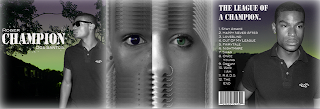
The CD cover was linked very closely to the music video as the front cover had a close up image of Roger standing looking to his right. It is a very simple photo that has been created through us looking at other R&B stars images, performing subtle poses. Roger was edited in black and white, and the background in colour (Purple and Green). Where our background was a sunset we didn’t want to use the obvious sunset colours, so just to add interest we changed our colours, again identifying Alice’s juxtaposed personality. We found that the use of purple, being the colour of good judgement and it is said that if you surround yourself with purple you will have peace of mind. It is also used to calm over activity or energize from depression, which we found worked really well with ‘Alice’s’ depressive state, that’s why she turned too illegal substances. Where purple is the mix of blue (calm, cooling and expansive) and red is (focusing, dynamic and active energy) and the most obvious reason of love, which brings her connection to Roger. Together they portray two different mind states that she undergoes. On the other hand the green comes from the envious state of mind. It also means youthful and vigorous. We felt that it partly showed the connection between life and nature – connecting to her drug addiction. We felt these two significant colours related to both the narrative of the music video and other media references. We went onto changing the colours of the characters eyes as they become the dominant foreground image on the black and white background, standing out hugely. We kept Roger’s eye as blue and changed ‘Alice’s’ eye to green. We again felt this connected with her envious love to Roger. We also felt that having there eyes and half there faces showed that there rocky stage in their relationship where they was never really able to see eye to eye.

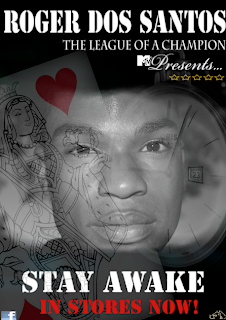
The advertising poster that we have created consists of the a main image of Roger’s faced, merged into a picture of the White Rabbit’s stop watch and a deck of playing cards. We felt that they were two big points in the ‘Alice in Wonderland’ film and were used a lot in our video, connecting with our main idea. We decided to do this for many reasons, such as making the audience aware of the idea for the music video. We also wanted to differentiate the idea of the CD cover and the Digipak, just so if the audience saw one and then the other they would be intrigued at the difference portrayed. We didn’t want to give too much away through the advert that is why we decided to leave Alice out. Where she is the main part of the video, we wanted to give a clue/connection to the theme without adding Alice on there. The ancillary texts that we have created as a group accompany the music video very strongly, setting the scene of a fictional story by introducing the characters and the props. This shows that the texts would appeal to the audience as they could become involved in the fictional world of ‘Alice in Wonderland’ actually feeling like they was part of this story. This means that they could engage thoroughly into this dream world and enjoy the CD and in turn the music video. This means that the ancillary texts create a sense of escapism to the audience which is another uses of gratification that has been used when creating the texts. Overall we feel that we have created very thoroughly thought about ancillary texts, that you can see have had a lot of design time spent on them, which really helps to accompany the music video that we have created. These texts make the audience aware of the music video and album and give them an interest and desire to buy the product. We use the eye contact of ‘Alice’ and ‘Roger’ on the front cover to connect and engage with the audience, drawing them in and making them intrigued to buy the album. I feel the texts use the Uses of Gratifications theory very well, as they give the audience constant information about the album, allowing the target audience to identify with the characters through the use of colour and imagery and they also allow the audience to escape from there everyday lives and become fixated in this dream world of ‘Wonderland’.

The back of cover of the CD we feel creates interest as the background image that is shown relates to the setting of the music video. You see the woods and a tiny figure in the bottom right corner, being Alice. We really liked this image as it sets the scene as a sort of thumbnail for the video. This also shows the continuity between the music video and the ancillary texts as the forest being the home of ‘The rabbit home’ equalling ‘Wonderland’. We kept the colour scheme the same on the back half as the front, having the image in colour and just the grass in black and white. Where we introduced the singer on the front cover of the CD, we felt on the back we should just have ‘Alice’ and her connection with ‘Wonderland’ as an overview of the storyline. We added in a quote ‘You never know how strong you are, till being strong is your only option’ we really liked this and felt it would be nice to have a quote on the back page, said by the artist. We felt this really showed his emotional side, and considering one of the shots on the front is of Roger looking emotional, it worked really well.

The advertising poster that we have created consists of the a main image of Roger’s faced, merged into a picture of the White Rabbit’s stop watch and a deck of playing cards. We felt that they were two big points in the ‘Alice in Wonderland’ film and were used a lot in our video, connecting with our main idea. We decided to do this for many reasons, such as making the audience aware of the idea for the music video. We also wanted to differentiate the idea of the CD cover and the Digipak, just so if the audience saw one and then the other they would be intrigued at the difference portrayed. We didn’t want to give too much away through the advert that is why we decided to leave Alice out. Where she is the main part of the video, we wanted to give a clue/connection to the theme without adding Alice on there. The ancillary texts that we have created as a group accompany the music video very strongly, setting the scene of a fictional story by introducing the characters and the props. This shows that the texts would appeal to the audience as they could become involved in the fictional world of ‘Alice in Wonderland’ actually feeling like they was part of this story. This means that they could engage thoroughly into this dream world and enjoy the CD and in turn the music video. This means that the ancillary texts create a sense of escapism to the audience which is another uses of gratification that has been used when creating the texts. Overall we feel that we have created very thoroughly thought about ancillary texts, that you can see have had a lot of design time spent on them, which really helps to accompany the music video that we have created. These texts make the audience aware of the music video and album and give them an interest and desire to buy the product. We use the eye contact of ‘Alice’ and ‘Roger’ on the front cover to connect and engage with the audience, drawing them in and making them intrigued to buy the album. I feel the texts use the Uses of Gratifications theory very well, as they give the audience constant information about the album, allowing the target audience to identify with the characters through the use of colour and imagery and they also allow the audience to escape from there everyday lives and become fixated in this dream world of ‘Wonderland’.
Evaluation Question 1 - In what way does your media product use, develop or challenge forms and conventions of real media products?
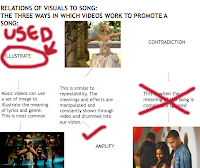
Music videos are a big part of today’s media life. Every video’s form depends on the music genre it is for. And considering there are many different genre categories, this was a big part of the music video creation process. Overall music videos tend to use a lot of cuts, discarding a good 60 % of the video that you had to start with, which we found was a lot harder then we had thought as the video contained many quick shots that were just seconds long. The average music video consists of being around three and four minutes long. When we was creating our video we watched a variety of different genre’s of videos and found that the video also carries some relation, if not a lot of relation to the songs lyric’s, which relates back to the Andrew Goodwin theory where there is a strong relationship between the lyrics and the visuals.
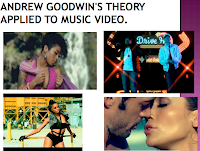
This was a very strong point in our video, using an engaing storyline to keep the audience intrigued. We focused a lot on the Goodwin theory and it was a big input in the video, precisely looking at the idea of 'Did we take it to far?' and 'Did we chase the rabbit into wonderland?' Two rhetorical questions that were narrowly answered in our video. We decided that we liked the idea as it gives the video a storyline and something that follows through out the video. Once we had our basic video and idea, and chosen song (Example – Stay Awake) we decided that one of the lines within the song is ‘did we chase the rabbit into wonderland’ we decided we were going to base our idea around this Alice in Wonderland theme.
The genre of our video is RnB/dubstep. The conventions include; artist performance (we choose not to have a band, as it helped us with our idea of centring it around just a lead singer, just like the artist of the real video. We also included fast cuts, various background lighting; locations in the studio for our lead singer roles, and the forest and Camden Market and train station for Alice. Glitter and cards were our main Mise-en-scene shots as they related to the ideal theme of ‘Alice in Wonderland’.

I learnt that one of the conventions of a real music video consisted of signifier’s to represent the type of genre the music video is by costume choice which we included in our music video. We focused on this convention because we looked at the forms and conventions of a real media product and recognised that this was a major part in letting our target audience decode this. Another thing that I learnt from looking at real media products was the locations that were chosen. For our lead role parts we decided to place our singing (Roger) in a studio, connecting to the love of music that is shown through a recording studio. We have used this media convention to signify not only what target audience we are aiming at but to portray an idea our chosen theme. Where our chosen target audience was from 16+, it juxtaposed the theme idea of ‘Alice in Wonderland’ as that is a children’s book that is loved by all ages. We also felt that our audience could also contain young adults, as they could relate to this convention because they can reminisce and look back as fairytales are a big part of people’s lives when growing up. We choose to portray Alice as ‘Bad Alice’ as an intoxicated teenager who feels ‘wonderland’ is her state of mind when intoxicated with illegal substances. We portrayed the idea of drugs and imagination as it can be shot wherever the desired place, as long as it contained correct framing that had been shot properly. Throughout the creation of this video I have learnt that real music genre conventions are the build up of creating a target audience. Thee music genre conventions we have added into our music video are focusing on having one role, an attractive black male, which then related well with our chosen genre of hip-hop and rap/ R&B.
I believe our choices of chosen location's being = forest, rabbit hole, party scene, woods, house and the studio for Roger, and the chosen costume = Alice's dress being the main focus, showing an automatic connection with the Character. This also relates back to the intertextual reference to Alice. All of the mise-en-scene together really made the audience able to decode the signifies to understand the set target audience and age group. This enabled us to really work with the mise-en-scene of the video, relating all our shots to the chosen genre and decode the signifiers to understand the age group.I felt that our edit's matched the song really well, fitting and syncing in especially at the points that were sung by Roger. Our idea of montage throughout meant that we had lots of small snippet shots, this related back to the theory of time and motif which is means the reacurrance throughout. This connects with the whole idea of the rabbit and the time element, and how he always has a stop watch, which is seconds long, so we choose to add in second's long. The quick time element also shows Alice's insanity and the rush and confusion in her brain.
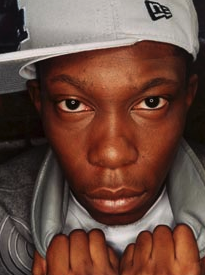
Wednesday, 14 December 2011
Subscribe to:
Comments (Atom)





